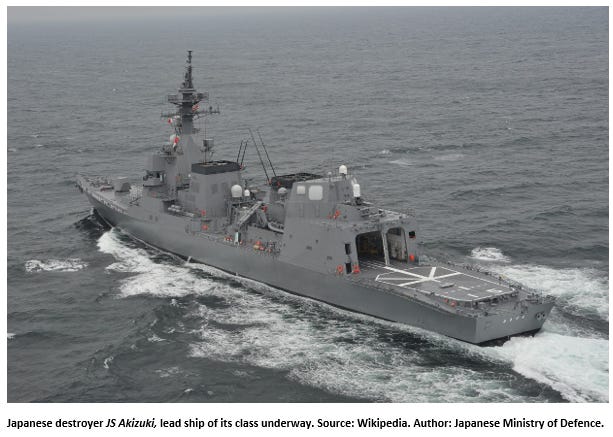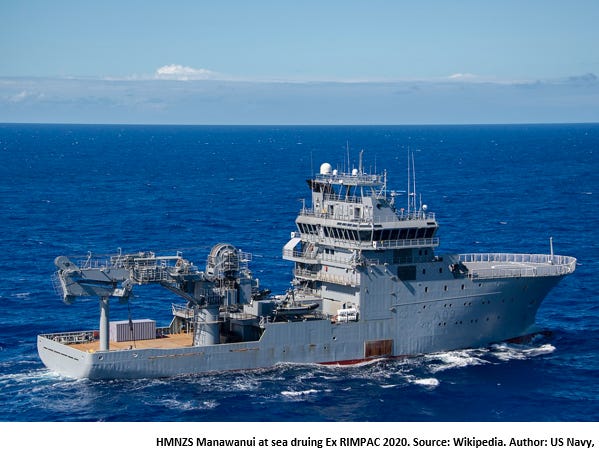China exercises near Taiwan, US and its partners exercise too
October is a busy month in the South and East China Seas. Both China and the US both conducting naval exercises.
Exercise Sama Sama a joint training activity between Philippines, the US and other allies and partners that finished last week. This year, participants exercised in the Luzon Strait close to Taiwan, and practiced their war-fighting skills. Exercise Sama Sama follows September’s joint training between the US, Australian, Japanese and New Zealand navies.
Ex Sama Sama is in its seventh iteration and this year’s exercise was an opportunity for nations that may work with Philippines to practice operating together. The exercise was high-intensity and included anti-submarine, surface and air-warfare drills.
Rear Admiral Todd Cimicate from the US Navy told media that the exercise is about building relationships and the ability to operate together, stating “The intent of these exercises is not to ruffle feathers. It’s tailored for interoperability. ” Over nine days Exercise Sama Sama brought together ships and aircraft from Philippines, the US, Canada and Japan.
This type of exercise has two objectives, the first is deterrence. It demonstrates that the participating nations are willing to support Philippines or Taiwan if either is attacked. The exercise’s second objective is to practice the systems and processes required for a multi-national force to operate together, or inter-operability. This objective contributes to deterrence because regular practice reinforces the message that as well as being willing to fight together participating nation are also capable of working together effectively.
China has also been actively exercising its military both in the South China Sea and near Taiwan. Earlier in October, Chinese naval forces exercised in the South China Sea. Recently China conducted a large, one day exercise near Taiwan. The exercise simulated a blockade of the island, and was large the BBC reporting on 14 October that 34 ships and 125 aircraft operated near the island. Further stating that “China's foreign ministry confirmed it had simulated military assaults and port blockades, and described Taiwanese independence as being "incompatible" with peace in the region.”
Taiwan celebrates its National Day on 10 October, so it is likely that this exercises was planned to coincide with this holiday. Like previous Chinese exercises near Taiwan, this activity serves a variety of purposes. The exercise is a threat to people in Taiwan, that if a political solution cannot be agreed, then China has the military power to take the island by force. The exercise also demonstrates China’s resolve to external observers, the use of military resources sending a clear message about the nation’s capability to retake the island by force.
Finally, a programme of exercises like the ones near Taiwan in the recent years, serves a direct military purposes. It test’s Taiwan’s responses, giving China intelligence for future planning and it also wears down Taiwanese defences. Relentless exercises that do not culminate in action, force Taiwan’s military to constantly mobilise resources that are not used. Eventually, military personnel are likely to tire, or become complacent creating potential opportunities for an aggressor. Essentially, these exercises could be more than just sabre-rattling, and may be integral part of a wider political and military campaign to undermine Taiwan’s defences.
Japan’s new Prime Minister, the implications for Pacific security
On 1 October, Japan’s new Prime Minister, Shigeru Ishiba was sworn into office. He brings a wide range of experienced having served as the Minister of Agriculture, and more recently Defence. Ishiba is a strong proponent of collective security and believes that a well-governed security architecture is essential for Indo-Pacific stability. He has also demonstrated willingness to contribute to security partnerships, backing Shinzo Abe’s re-interpretation of Japan’s constitution to deploy Japanese Self Defence Force personnel overseas. Ishiba also supported Fumia Kishida’s decision to increase the defence budget to 2% of GDP.
Ishiba is committed to strengthening Japan’s defence force, believing that the nation’s ability to defend itself contributes to deterrence and therefore regional security. His cabinet appointments include several politicians that have defence experience or support expanding Japan’s security commitments, including Gen Nakatani an ex-military officer, Yoshimasa Hayashi a former Defence Minister and ex- Foreign minister who was the first Japanese foreign minister to attend NATO’s Foreign Ministers’ Meeting, and Takeshi Iwaya who supports revision of the constitution to allow for military deployments.
In the Pacific, this has important implications, Ishiba is a strong supporter of Japan increasing its defence relationship with the US. Although, he is wants to ensure that relationship is a partnership of equals, and is keen to base Japanese forces outside Japan in places like Guam. He is also on record calling for an Indo-Pacific NATO, and is now in a position to advance this idea. Ishiba, recently told Taiwan’s new President, Lai Ching-Te that the the Pacific’s most important issue was that “today’s Ukraine did not become tomorrow’s East Asia”. A statement that was followed in September this year by a Japanese destroyer transiting the Taiwan Strait with Australian and New Zealand ships, exercising the right of free navigation.
In the last Pacific Brief on 6 October, we discussed Japanese plans to permanently rotate forces through Darwin. The new Prime Minister is likely to support this type of deployment. Permanent, and rotational deployments provide training opportunities and are a way to mitigate risk. If Japanese warships, aircraft, military equipment and soldiers are spread across the Pacific from Darwin to Guam or Hawaii then they are less likely to be destroyed in pre-emptive strikes by a potential aggressor. Further, deployments like this allow Japanese forces to improve their inter-operability and get to know potential theatres for future deployment. So, it is a safe bet that we will see more overseas deployments of Japanese Self Defence Force assets and personnel.
It is clear that Japan’s new Prime Minister and Cabinet represent a large, national commitment to regional security. Japan is investing money in defence, and is revising its historic position on deployment of military forces outside of Japan. This indicates the high-level of concern the nation has regarding peace and stability in the region. Ishiba is committed to Japan becoming militarily stronger, and more engaged with its defence partners. Based on this information, we should expect Japan to become closer and more inter-operable with the US and Australia. It may join AUKUS, and it is possible that it could be offered access to the ‘Five Eyes’ intelligence network. It also seems likely that Japanese forces will start to become more active in the South West Pacific, supporting and training with the smaller nations in a similar manner to the US, UK, Australia, France and New Zealand.
New Zealand navy ship sinks
On 12 October, HMNZS Manawanui sank after running aground on a reef in Samoa. The multifunctional vessel is an ex-North Sea oil industry workboat, and was purchased by the Royal New Zealand Navy in 2019. Since 2020, when the ship joined the fleet it has served in a range of roles including hydrographic survey, disaster response and acting as a dive-tender.
The ship’s loss is a blow to the Royal New Zealand Navy, a small fleet with large responsibilities. HMNZS Manawanui has attended exercise RIMPAC, helped remove unexploded World War Two ammunition from the seabed near Tuvalu, Niue, Vanuatu and Fiji, provided disater relief support in New Zealand and conducted three deployments to the Pacific Islands.
Currently, New Zealand is reviewing its defence capabilities and facing a period economic austerity. Replacing a NZ$100 million ship will be difficult within New Zealand’s defence budget, making the government’s job harder. Additionally, there is still considerable debate about the future of New Zealand’s navy and its role within the defence force.
A debate with a long history, the navy’s combat capability reducing steadily since World War Two. Until the 1990s New Zealand operated four frigates, large, blue-water, combat capable vessels. In 1997, when the current ANZAC Class frigates joined the fleet, this component of the fleet was reduced and two frigates were purchased. The money saved purchasing more patrol vessels.
The 2016 Defence White Paper argued New Zealand should purchase a Littoral Operations Support vessel, a warship able to “support operations from the sea onto land, including diving, mine and other obstacle clearance, hydrography, and movement of personnel.” However, money to meet this recommendation ran out when a project upgrading the navy’s frigates ran over budget. Buying HMNZS Manawanui was a lower cost alternative to purchasing a military specific Littoral Operations Support ship. At the time, this decision was criticized by some commentators and the replacement discussion will reignite this debate.
The discussion revolves around whether New Zealand tries to maintain a combat capable navy that is able to operate with its ally, Australia or other regional partners in contested areas. Or whether the country stops being combat capable and focusses on surveillance, law enforcement and disaster relief, the traditional roles of a coast guard. An important question because New Zealand’s ally and its other security partners are increasing their defence spending. A lot has changed since the the 2016 Defence White Paper, and even since 2019 security issues have become more pressing, so the outcome of the upcoming discussion may be quite different.
Melanesian update
A regular update on the Pacific’s least reported trouble spot; Melanesia.
Australia uses sport as soft power in Melanesia
The Australian Broadcasting Corporation reported this week that Australia is using sport as part of its diplomacy in Melanesia. Australian Minister of International Development and the Pacific, Pat Conroy recently met with Papua New Guinea’s Prime Minister, James Marape and discussion included establishing a new rugby league franchise in the Papua New Guinea.
The deal includes an investment of approximately AS$ 600 million over ten years to support the new team, that will compete in the Australian national competition. Rugby league is an enormously popular sport in both Australia and Papua New Guinea, and the deal is an interesting example of diplomacy because this support is reported to be contingent on Papua New Guinea rejecting Chinese security agreements.
Minister Conroy’s statements on the subject are blunt and to the point, including stating that "Rugby league is one element of our soft diplomacy." The idea of using sport as a form of diplomacy may seem amusing but this view trivialises the reality of the diplomatic contest. The reality is that Australia is committing a significant amount of money to cementing its relationship with its neighbour. An investment that leverages off the emotional connection that exists because of the two nations shared sporting history.
We should expect to see more activity like this in the future, as all competitors for influence in the Pacific, look for common ground on which to build diplomacy.
Fighting in Papua New Guinea’s highlands
Conflict continues near the Porgera Mine in Enga province, and escalated last week. The violence started with armed locals blocking a road, and opening fire on a supply convoy. Police escorting the convoy returned fire and shot six people, killing one.
The mine re-opened in late-2023 and operations have been disrupted by violence several times as illegal miners. the mine itself and a local landowners clash with each other in the local area. The problems at Porgera Mine are indicative of the trouble that Papua New Guinea has maintaining rule of law in remote areas.




